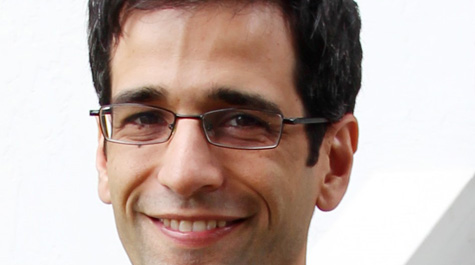In 'Nature': Using GIE to map deforestation in the Amazon rainforest
As deforestation continues to rise in the Amazon rainforest, efforts are ongoing to identify ways to reverse the trend of tree loss in this valuable ecosystem.
One example is land titling, land reform that grants private individuals and families formal property rights for land they previously occupied informally or used on the basis of customary land tenure.
William & Mary Economics Professor Ariel BenYishay contributed to a paper that examined land titling called, “Impacts of a large-scale titling initiative on deforestation in the Brazilian Amazon” that was recently published in the journal Nature Sustainability.
BenYishay, the director of research and evaluation for AidData, helped interpret data using geospatial impact evaluation (GIE) that ties together data from geographic information systems.
The paper was co-authored by Benedict Probst, Andreas Kontoleon, Tiago N.P. dos Reis and BenYishay.
The goal of titling is to regularize land tenure and reduce deforestation, but evidence on this topic was previously lacking. The authors analyzed the responses of 10,647 landholders between 2011 and 2016 to a large-scale land titling program called the Terra Legal Programme (TLP) in the Brazilian Amazon, which set to regulate an area as big as Germany and France combined.
“One of the most promising ideas in the international development community had been that if we just could give local farmers and cattle ranchers enough security in their land rights that they would then feel more secure and therefore not encroach as much on other areas and deforest less,” BenYishay said.
After examining the data, the results weren’t so promising.
“If anything, we see deforestation getting worse rather than better, especially for the smallest farmers,” BenYishay said.
The study concluded that receiving a title increased the likelihood that clearing occurred on a property by 0.8 percent per year relative to untitled properties. That effect was especially noticeable for landholders of small and medium properties, with clearing increasing by 0.9 percent and 1.9 percent on small and medium landholdings, respectively.
The study also found the extent of deforestation increased with land titling, especially on medium-sized properties, which saw an increase of 4.3% compared to similarly sized properties without titles.
Moreover, it found that landholders with property titles deforest more as crop and cattle prices increase, indicating greater market integration at the expense of conservation.
“Our results suggest that titling alone without greater coordination with other policies will not yield the expected environmental benefits,” the paper states.
Lead author Probst sought out BenYishay’s assistance in part for his expertise with geospatial impact evaluation.
“Geospatial impact evaluation is something we’ve been refining at AidData and writing a lot of papers about,” BenYishay continued. “This particular study actually came to me. The lead author, Benedict Probst, and his advisor at Cambridge, Andreas Kontoleon, contacted me about working together because they had seen this geospatial impact evaluation methodology and seen this work at AidData. So it was exciting because they were taking on the methods and adopting them wholesale.”
This study highlighted the value of geospatial impact evaluation, giving BenYishay optimism about how this method of data evaluation can be used moving forward.
“There are a lot of other opportunities to do this kind of work,” BenYishay said. “Increasingly for both upper-level undergrads and grad students, the barriers to using satellite based data have come way down.”















